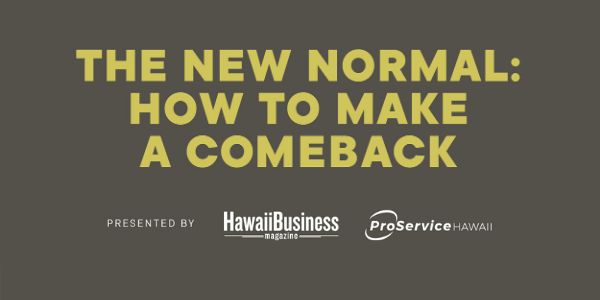What’s Trending for Women in Business
According to the National Association of Women Business Owners, women-owned businesses account for 31% of all privately-held firms in the United States. That number jumps a bit to 37.5% for women-owned firms in Hawaii, according to a recent census report. While there’s still a lot of work to do to close the gender-equality gap, it’s promising that the number of women in business continues to climb every year.
For employers and business leaders, it’s important to have an understanding of the current landscape in order to navigate the intersection of gender and career, and ultimately, to create a better work environment for women to succeed and thrive.
As we wrap up 2018 and look forward to 2019, here are three trends we see (and expect to continue seeing) as it relates to gender diversity and women in business:
1. Embracing diversity in the workplace
More and more companies today are embracing gender diversity in management and examining how their leadership composition reflects their culture and priorities. Why? Diversity in the workplace is legitimately good for business performance, as well as employee engagement. In fact, according to a study by Gallup, gender-diverse teams have better financial outcomes than those dominated by one gender.
And research continues to support the notion that women in leadership positions is a win-win for culture and employees. According to Pew Research Center, the majority of Americans say women are better than men when it comes to being compassionate and empathetic, as well as better at working out compromises and standing up for what they believe in. In addition, the study found 43% of Americans say women are better at creating a safe and respectful workplaces.
Related: Why Gender Diversity is Great in the Workplace
As men and women bring to the table different perspectives, ideas, and insights that contribute to overall business performance, we anticipate that the business benefits of gender diversity will be a continuing point of discussion into the New Year among managers and business leaders alike.
2. Better family leave policies
With unemployment in Hawaii at a low of 2.1% and the battle for top talent growing, local businesses can’t afford to loose high-performing employees if they want to stay competitive. And yet, 17% of women employees are leaving their jobs mid-career, according to LeanIn’s Women in the Workplace. According to another study by the Center for Work-Life Policy, “43% of highly qualified women with children are leaving careers or off-ramping for a period of time.”
And what’s the reason? For the majority of women surveyed, the reason for this off-ramp was to attend to responsibilities at home. During the middle part of a woman’s career, major life decisions start to have a bigger impact—whether it’s marriage, raising kids, caring for aging parents or pursuing continued education. Sally Blount, dean of Northwestern University’s Kellogg School of Management, calls this the “Mid-Career Marathon.”
Related: What Hawaii Business Owners Can Learn From Other Businesses’ Parental Leave Policies
As we’ve mentioned before, family leave policies can give companies a competitive advantage in not only attracting and hiring, but also with retaining top talent. And that couldn’t be more true for female candidates and employees. Whether it’s Netflix’s historic progress with parental leave, or the Bill & Melinda Gates Foundation’s policy of up to 52 weeks of paid time off for mothers and fathers, we expect to see companies continuing to improve their parental leave benefits and invest in programs that support employees with new children. This also includes gender neutral or primary caregiver policies to that reflect a commitment to families and women.
3. More workplace flexibility
By now, it’s commonly recognized that flexible work arrangements are linked to higher feelings of balance and job satisfaction for both men and women alike. However, this is increasingly true for women in particular. In fact, a recent study found that 67% of women who aren’t working by choice would likely go back to work if they had flexible hours.
For new or working mothers who have changing schedules and more responsibilities, we’re seeing the ask for flexible work schedules being made, as well as a continued effort by employers to make sure that flexible work arrangements are implemented successfully. From leveraging technology to establish good communication with employees working away from the office, to providing training to leaders on how to work with or better manage remote employees. But it’s up to leadership to fully understand and be transparent about official policies and how these policies are applied across the company.
Looking forward
With more and more companies embracing gender diversity, improving parental leave policies and supporting flexible work hours, it’s no surprise that these trends continue to grow on a mainstream level and impact the way that we think about and do work in Hawaii.
While there are a wide range of issues affecting women in the workplace, keeping a pulse on these three trends (and addressing them too) can help companies of all types evolve with the times and improve the way they attract, retain and manage women in business so that they succeed and thrive together.









